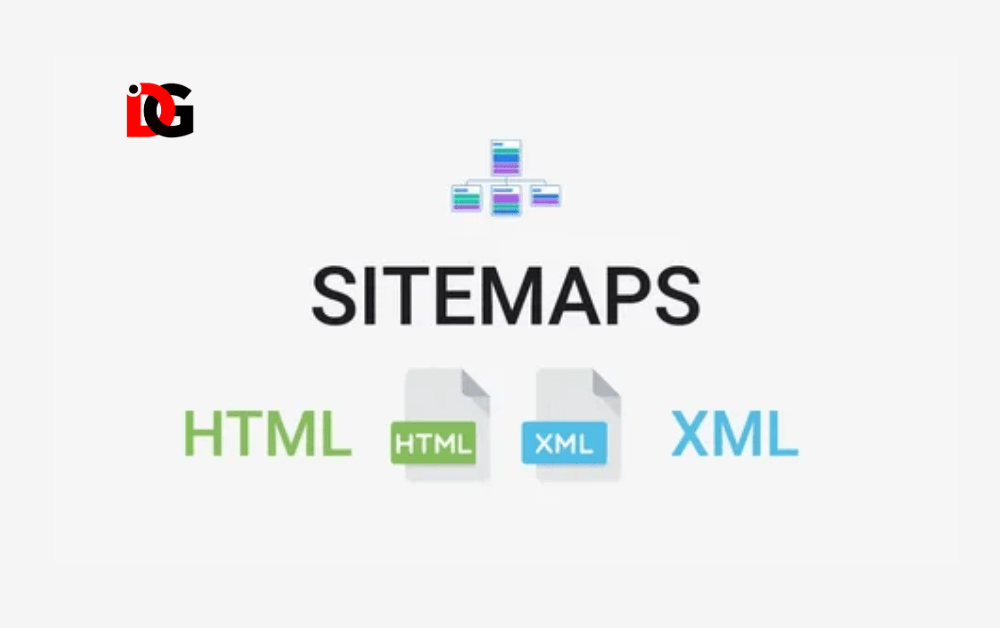
When you hear about SEO (Search Engine Optimization), you may think about keywords, backlinks, and ranking on Google. But there’s one aspect of SEO that often gets overlooked: sitemaps. Even though it’s a behind-the-scenes component, a sitemap plays a significant role in making sure search engines like Google can properly crawl and index your website.
In this blog post, we will explain what a sitemap is, how it helps your website’s SEO, the different types of sitemaps, and why having one is important. Whether you’re new to SEO or just want to learn more, this guide will give you everything you need to understand the importance of sitemaps in simple, easy-to-understand language.
What is a Sitemap in SEO?
A sitemap is essentially a list or map of all the pages on your website. It’s a file where you can tell search engines about the pages, videos, and other files on your site, and how they’re connected. In simple terms, it’s like a directory of your website that guides search engines on how to find and understand your content.
There are two main types of sitemaps:
- XML Sitemaps
- HTML Sitemaps
Let’s dive deeper into these types and their roles in SEO.
What is an XML Sitemap?
An XML sitemap is designed specifically for search engines. It’s a file that contains a list of the URLs of your website, along with important information like when the page was last updated, how often it changes, and its importance compared to other pages. This information helps search engines like Google crawl your website more efficiently and index it correctly.
Having an XML sitemap is especially helpful for large websites, new websites, or websites that have rich media content like videos or images. It ensures that search engines can easily find all your important pages.
What is an HTML Sitemap?
An HTML sitemap is more for human visitors than search engines. It’s a page on your website that lists all the main links, helping visitors find what they are looking for more easily. HTML sitemaps are particularly useful for websites with many pages, as they act as a quick reference for users to navigate through the site.
Though HTML sitemaps don’t directly impact SEO as much as XML sitemaps, they still improve user experience (UX), which indirectly helps SEO. Websites that provide a better user experience tend to perform better in search engine rankings.
Why are Sitemaps Important for SEO?
You might be wondering, “Why do I need a sitemap? Isn’t my website already accessible to search engines?” The truth is, even though search engines are very smart, they can miss some pages or have trouble finding new content. A sitemap makes sure that your pages are easy to find and crawl, improving the chances of your website getting ranked in search results.
Let’s look at the key reasons why sitemaps are important for SEO:
1. Ensures All Pages Are Crawled and Indexed
One of the main jobs of a sitemap is to ensure that all your pages are discovered by search engines. Without a sitemap, some of your pages may get lost in the shuffle, especially if your website has a lot of pages or uses a complex structure. A sitemap acts as a guide, telling search engines about every page on your site.
This is especially crucial for large websites or new websites with fewer external links pointing to them. When you submit a sitemap to search engines, you’re telling them, “Hey, look here—there’s valuable content that should be indexed.”
2. Helps with Website Navigation
While XML sitemaps are for search engines, HTML sitemaps are for humans. By providing an HTML sitemap, you help visitors easily navigate your website and find the information they’re looking for. When users can find content quickly, they spend more time on your site, reducing bounce rates, which is a positive signal to search engines.
3. Reduces the Risk of Missing Content
Sometimes search engines may miss content if your website’s structure is complex, if pages are buried deep within your site, or if there aren’t enough internal links. A sitemap reduces the chances of this happening by directly pointing search engines to all your pages.
For websites that have recently launched, or if you’re adding new pages, a sitemap ensures that the search engines quickly learn about your new content.
4. Provides Information About Page Updates
Search engines want to know when content is fresh and up-to-date. XML sitemaps include metadata that helps search engines understand when a page was last updated. For instance, if you regularly update your blog, an XML sitemap will tell search engines that they need to revisit your content.
How to Create a Sitemap for Your Website?
Now that you understand the importance of sitemaps in SEO, you might be wondering how to create one. The process is fairly simple, and there are several tools available to help you do it. Let’s go over the steps involved in creating a sitemap.
1. Use an Online Sitemap Generator
There are many free and paid sitemap generators available online. These tools will automatically crawl your website and generate a sitemap for you. Some of the most popular sitemap generators include:
- XML-Sitemaps.com
- Screaming Frog
- Yoast SEO (for WordPress users)
These tools allow you to quickly create an XML sitemap, which you can then submit to search engines.
2. Create the Sitemap Manually (for Small Websites)
If you have a small website with just a few pages, you can create the sitemap manually. All you need to do is create an XML file using a text editor, list your URLs, and include additional information like last modification dates and priority. However, this method is only practical for small websites because manually creating sitemaps for large sites can become very time-consuming.
Here’s an example of what a basic XML sitemap looks like:

3. Submit Your Sitemap to Search Engines
Once you have created your sitemap, you need to submit it to search engines like Google and Bing. For Google, you can submit your sitemap via Google Search Console. Here’s how:
- Go to Google Search Console and log into your account.
- Select your website property.
- In the left-hand menu, click on “Sitemaps.”
- Under “Add a new sitemap,” enter the URL of your sitemap (e.g., https://www.example.com/sitemap.xml).
- Click “Submit.”
For Bing, the process is similar through Bing Webmaster Tools.
Best Practices for Using Sitemaps in SEO
Now that you know how to create and submit a sitemap, let’s go over some best practices to make sure you’re using sitemaps effectively for SEO.
1. Keep Your Si Important Pages
Your sitemap should include only important pages that you want search engines to index. Don’t include pages that don’t add value, such as login pages, thank you pages, or duplicate content. If a page doesn’t help your SEO, leave it out of your sitemap.
3. Limit the Number of URLs
XML sitemaps can only contain 50,000 URLs. If your website has more pages than this, you’ll need to create multiple sitemaps and use a sitemap index to manage them.
4. Use Robots.txt to Control Crawl Behavior
If you don’t want search engines to crawl certain pages, you can use the robots.txt file in combination with your sitemap. This tells search engines which pages they are allowed to visit and which they should avoid.
Common Sitemap Mistakes to Avoid
Creating a sitemap is easy, but there are a few mistakes you should avoid to ensure your sitemap works effectively for SEO.
1. Submitting the Wrong File Type
Make sure you submit an XML file, not an HTML file. HTML files are for human visitors, not search engines. An XML sitemap is specifically designed for search engine crawlers.
2. Including Unnecessary Pages
As mentioned earlier, you should only include important, valuable pages in your sitemap. Including irrelevant pages (like admin or thank-you pages) can confuse search engines and affect your SEO.
3. Forgetting to Update Your Sitemap
If your website content changes, but your sitemap doesn’t reflect those changes, search engines may continue to index outdated pages. Make sure to update your sitemap whenever you make significant changes to your site.
Conclusion
A sitemap is a simple yet powerful tool for improving your SEO. By helping search engines crawl and index your website more efficiently, a well-organized sitemap increases the chances that your site will be properly represented in search results.
Remember, an XML sitemap is key for search engines, while an HTML sitemap can enhance user experience. Always keep your sitemap updated, follow best practices, and avoid common mistakes to make the most of this essential SEO tool.
Whether you’re running a small blog or managing a large e-commerce store, ensuring your website has an updated sitemap will help improve your search rankings and visibility.
If you want to read more blogs like this, visit our website for expert strategies and tips!




Leave a Reply